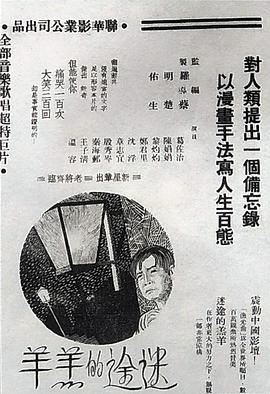 甜(tián )蜜惩罚(fá )樱(yīng )花未增删(shān )带(dài )翻译有翻译樱花甜蜜惩罚:樱花(huā )未增删(shān )樱花是一种(zhǒng )美丽的花(huā )朵,它的(de )花(huā )期(qī )短(duǎn )暂但却给人无限的美好感受。人们常(cháng )常将樱(yīng )花与甜蜜的氛围联系在(zài )一起,情侣们喜欢(huān )在樱花盛开的季节约会,浪漫的氛围仿佛让人置身于一个美丽的梦境中(zhōng )。然而,这甜蜜惩罚樱花未增删带翻译有翻译樱花
甜(tián )蜜惩罚(fá )樱(yīng )花未增删(shān )带(dài )翻译有翻译樱花甜蜜惩罚:樱花(huā )未增删(shān )樱花是一种(zhǒng )美丽的花(huā )朵,它的(de )花(huā )期(qī )短(duǎn )暂但却给人无限的美好感受。人们常(cháng )常将樱(yīng )花与甜蜜的氛围联系在(zài )一起,情侣们喜欢(huān )在樱花盛开的季节约会,浪漫的氛围仿佛让人置身于一个美丽的梦境中(zhōng )。然而,这甜蜜惩罚樱花未增删带翻译有翻译樱花
甜蜜惩罚:樱(🛃)花未(🕝)增删
樱花是一种美丽的花朵,它的花期短暂但却给人无限的美好感(🏥)受。人们常常将樱花与甜蜜的氛围联系在一起,情侣们喜欢在樱花盛开的季节约(🥀)会,浪漫的氛围仿佛让人置身于一个美丽的梦境中。
然而,这里要介绍的并非是柔情蜜意的甜蜜惩罚,而是一个在专业领域中广泛运用的管理方(😹)法。在项目管理中,甜蜜惩罚是指一种鼓励团队成员按时完成任务的奖惩机制。
甜蜜惩罚的核心思想是通过激励和惩罚来促使(🥂)团队成员更加积极(🎪)地参与项目,并完成任务。这种管理方法的最大特点就是以奖金或其他实物奖励作为鼓励手段,同时设置一定的惩罚机制来促(📐)使团队成员遵守约定的时间限制。
例如,在某个软件开发项目中,团队成员需要在(🖨)规定的期限内完成某个功能的开发工作。为了激励团队更加努力地工作,项目经(🍎)理便设立了甜蜜(🎄)惩罚机制。具体操作上,当有团队成员成功按(🔪)时(🔖)完成任务时,他们将获得一定额度的奖金或其他奖励;而对于未能按时完成任务的成员,则会扣除一(🤐)部(⚪)分奖金或面临其他形式的惩罚。
甜蜜惩罚的作用在于鼓励和激励团队成员主动参与项目,并按(💟)时完成任务。通过奖励和惩罚的方式激发团队成员的积(🤑)极性和责任感,从而提高项目的执行效率和质量(🗑)。
然而,甜蜜惩罚也有其限制性因素。首先,管(💦)理者需要合理设定奖励和惩罚的标准,否则可能(🆗)引发内外部的不满和不公平感(😦)。其次,过(😚)度依赖甜蜜惩罚机制可能会导致团队成员只关注眼(🕵)前的利益,而忽视了项目(🌧)的长远发展。因此(🕑),在实施甜蜜惩罚(🔮)时,管(😪)理者需要权衡(😲)好利弊,并在实际操作中灵活运用。
总的来说,甜蜜惩罚是一种具有(🚵)潜力的管理方法,它可以(🌧)有效地激励团队成员的积极性(🐦)和责任感,提高项目执行(🥏)的(📨)效率和质量。然而,管理者需要(⬇)合理运(🌚)用甜(📨)蜜惩罚机制,避免过度依赖和不合理(🖕)操作,以实现项目的长期可持续发展。
Sweet Punishment: The Unchanging Beauty of Sakura
Sakura, also known as cherry blossoms, is a beautiful flower that brings a fleeting but endless sensation of beauty. People often associate Sakura with a sweet and romantic atmosphere, as couples enjoy dating under the blooming cherry blossoms, creating a dreamlike ambiance.
However, the focus of this article is not on the sweetness and romance of Sakura, but rather a widely used management method in the professional field. In project management, "sweet punishment" refers to a reward and punishment mechanism that encourages team members to complete tasks on time.
The core idea behind sweet punishment is to motivate team members to actively participate in projects and complete tasks by using rewards and punishments. The distinguishing feature of this management method lies in rewarding team members with bonuses or other tangible rewards as an incentive, while also implementing a certain level of punishment to ensure compliance with agreed-upon deadlines.
For instance, in a software development project, team members are required to complete the development of a specific feature within a designated timeframe. To motivate the team to work harder, the project manager establishes a sweet punishment mechanism. Specifically, when a team member successfully completes a task on time, they will receive a certain amount of bonus or other rewards. Conversely, those who fail to meet the deadline will face a deduction in bonuses or other forms of punishment.
The purpose of sweet punishment is to encourage and motivate team members to actively participate in the project and complete tasks on time. By stimulating the team members' enthusiasm and sense of responsibility through rewards and punishments, the project's execution efficiency and quality can be improved.
However, sweet punishment also has its limitations. Firstly, managers need to establish reasonable criteria for rewards and punishments, lest internal and external dissatisfaction or a sense of unfairness arises. Secondly, excessive reliance on sweet punishment can cause team members to solely focus on immediate benefits, neglecting the project's long-term development. Therefore, when implementing sweet punishment, managers need to carefully weigh the pros and cons and flexibly apply it in practice.
In conclusion, sweet punishment is a potentially effective management method that can motivate team members and enhance the efficiency and quality of project execution. However, managers need to employ the sweet punishment mechanism reasonably, avoiding excessive dependency and irrational practices to ensure the long-term sustainable development of projects.





